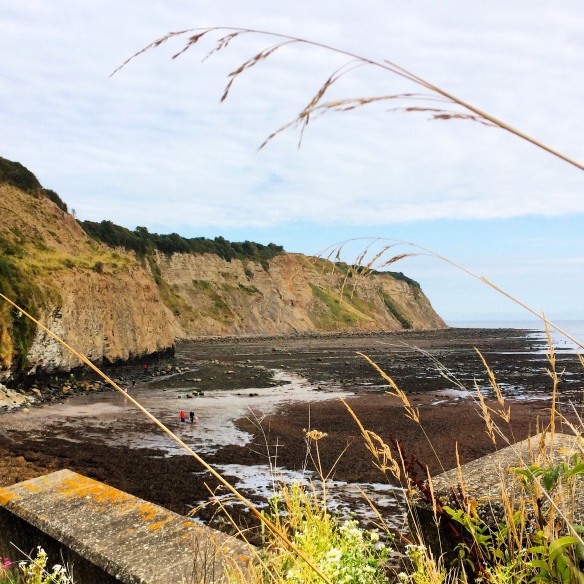A case file is being prepared by the Attendance and Welfare department at my local council because I chose to take my children on holiday in term-time and refused to pay the fixed penalty notice that they served me with. Should the legal department choose to go ahead and prosecute me, I could be fined up to £2000 or in the worst possible case given a custodial sentence.
Needless to say, I am very, very angry and I would like to explain why.
If you are reading this and you are in a similar situation please remember that the views I am going to express are not those of a legal expert. If I know something to be a fact I will try to make that clear, likewise, if I am simply expression an opinion, I will also try to make that clear. It is very important to distinguish between the two.
So, what does the law say? The relevant piece of legislation is the Education Act of 1996, part VI, Chapter II, section 444 (1). This clause states
If a child of compulsory school age who is a registered pupil at a school fails to attend regularly at the school, his parent is guilty of an offence.
The critical part of this clause is the use of the word regularly. If my children are absent from school for a week but have 100% attendance for the rest of the academic year, is that regular attendance?
In the well-publicised case of Jon Platt and the Isle of Wight Council, both the local magistrates and the High court agreed that a family holiday, taken in term-time could not be considered to make a child’s attendance ‘irregular’. They agreed that the child’s attendance should be considered over the whole academic year, not just over the period of one week when they were away. A benchmark of 90% attendance was considered to constitute ‘regular attendance’.
So why are so many parents being issued with ‘fines’ or ‘fixed penalty notices’ as they are more properly known (strictly they are not fines, the courts issue those)? First of all, it is important to know that if you have been issued with a fixed penalty notice (FPN) it is because the Head Teacher of your children’s school has referred the matter to the council and asked them to go ahead and issue one. It is quite possible for children who are on holiday to be marked on the register with an unauthorised absence but the Head Teacher DOES NOT have to ask for a FPN to be served.
In many ways this is sensible – it allows Head Teachers to show some common sense and humanity. There are many families who have no choice about when they can take a holiday from work due to the regulations of their employer. Some families have (other) children with special needs who cannot cope with the crowds that holidays outside of term time bring. Perhaps a family wedding has been arranged overseas? I would hope that head teachers would not stand in the way of families attending. There are examples of Head Teachers up and down the land taking the time to understand the needs of children and families in their school and making allowances for absence during term time. But there have been some Head teachers who have shown no sympathy whatsoever. I would like to make it clear that I am not applying this to the head teacher at my children’s school who I know has been helpful to families who need time off.
But back to the question, why are so many FPN’s being served? Most parents remember a time when schools were relaxed about term-time holidays. Since our school days, the Department of Education has changed the guidelines it issues to Heads. Where once, Heads could authorise family holidays, they are now directed to authorise them only in ‘exceptional circumstances’. How a head teacher interprets that can vary widely from school to school. And, as we have already seen, an unauthorised absence does not necessarily result in a FPN. So what is the benefit of issuing a FPN?
It would seem to me that the main aim is to deter parents from taking term-time holidays and you might consider that a worthy aim. I will address that point later on. You might agree with the Department of Education’s view that ‘every school day counts’ (I happen to disagree strongly, but again, more on that later). You may even agree with the way that OFSTED use attendance to judge a school. Schools will never achieve an ‘outstanding’ judgment unless their attendance figures are relatively high. I cannot tell you that this is factually true or even what level of attendance would be required but I can tell you that that is what a local school governor told me. Head Teachers who want their schools to be rated ‘outstanding’ (and show me one who doesn’t) need to get the attendance of pupils up. So, I ask you, is attendance about improving educational standards, or improving an OFSTED rating? You can decide which is more important to you. You may believe that one flows from the other. I don’t.
The cynical view of FPN’s is that they are a good way to squeeze a bit more cash from otherwise decent, law-abiding citizens. I have no idea if councils actually end up making any profits from them but one thing is for sure, the cash raised does not go directly to schools. One thing is for sure, many, many parents will simply pay the FPN and accept it as a worthwhile price to pay for a holiday when it suits them. If I had done that, it would have been financially, completely worth it.
So why didn’t I just pay? When you pay the FPN you are admitting to an offence and you may be asked to disclose it if you apply for a job. Fixed penalty notices were originally introduced by the Labour government, in 2003 as part of the Anti-Social Behavior Act. They were a way of quickly dealing with anti-social behavior without going to court. You could simply accept you were guilty of a crime, pay the ‘fine’ and avoid the expense (to the taxpayer) of court. The legislation was drafted so that it could be applied in the case of school absence, but it is unlikely that it was intended to be used against anyone other than persistent truants. I simply believe, like Jon Platt, that I have NOT committed any offense. Looked at over the course of an academic year, rather than one week, my children have very good attendance.
Having got the facts (as I understand them) out of the way, I would like to tell you about my case.
I have three children all in the same primary school. They are in year 6, year 4 and reception. In this academic year, my eldest and youngest children have each had two days off sick, in line with the school’s policy of not bringing children in who have been exposed to vomiting or diarrhea. My eldest son has had a total of three and a half days off due to medical appointments in a city 45 minutes drive away. This is because he was treated for childhood leukaemia between the ages of 3 and 6. We do not choose for his appointments to be in term-time or in a hospital far from our home. Neither do we enjoy waiting up to two hours each time to see his consultant, a very busy man, whose schedule can be disrupted instantly if a very sick child is admitted. These absences are beyond our control. My daughter has had no time off at all, other than our holiday.
My children are very well behaved, mostly achieving at or above the expected level and are very happy at school. The only exception is my eldest son who has specific learning difficulties with spelling. It IS likely his attendance in the early years, while he was coping with cancer, has had a serious impact on this. After all, I seem to remember that in Reception, his attendance may have been as low as 65% and I think it was just over 80% in year 1. No school attendance officer or school nurse offered us any support at that time. He is, however performing well in numeracy and I have paid a LOT of money to take him to a private tutor to help his literacy.
Do I sound like someone who deserves to be prosecuted for failing to ensure a good and regular education for my children.
Up until February of this year, we had NEVER taken the children out of school. Not for a single day. My children have always had very simple caravan holidays in the UK because that is what we could afford and we were quite happy about that. I’m not really massively in favour of taking children out of school. But this year I got a bit emotionally involved in the idea of an overseas holiday.
Early in the academic year, our school proposed to take Year 6 children to France (Calais to be precise). If I remember correctly, they would have gone by bus on a Monday in the middle of May and returned the following Friday. We live in the North-East of England so accounting for the travelling time, that would mean they would have had approximately 3 days in the Calais environs (which is barely France if you ask me). The trip would have cost about £450. This proposal hit a very raw nerve.
I had never been able to afford the joy of taking my children overseas. Firstly because when you have a child on cancer treatment, it is not a good idea to take them more than a few hours travelling time from their hospital. If your child has the kind of leukaemia my son had, that means you aren’t going to be going very far for 3 years. So, until he was 6 and in year 2 at school, we couldn’t really go far, even if we wanted to. Following that, I didn’t take the children out of school because I was happy to teach them that we were living within our means and doing the right thing with regard to the importance of schooling.
But when the school proposed an overseas trip, I felt cheated. It may be stupid, but I still feel emotional about it now. I wanted to be the one to introduce my child to foreign travel and the excitement that that brings. I wanted to be able to share that with him and if I could travel in term-time, I would be able to afford it. For the £450 it would cost for the school trip, our whole family could have rented a caravan in France. Perhaps that was selfish of me and I should have seen the trip as an opportunity for him but I made my choice and wouldn’t let him go.
I went to school and talked to the deputy head. Stupidly, I couldn’t control my emotions when I spoke to her and told her that if the trip went ahead I would take my children overseas myself, regardless of whether the absence was authorised or not. I was assured that the absence WOULD NOT be authorised. This is the point when I started to feel that the system was wrong. How can it be ok for a school to remove children for an overseas trip, but a parent cannot?
Ah, but I hear you cry, a school trip is educational. Well, yes, it may well be, but so might a family holiday. Would it not be educational to spend a week in London, seeing the sights and discussing their relevance to our history and culture? I would argue that ANY family holiday is educational in some way or other, even a week on the beach at Bognor, And I’m not the only one. Psychologists have looked at the effect of quality family-time on the brain and surprise, surprise, it turns out that holidays are good because they have the effect of ‘resetting’ the brain in a way that primes them for learning.
I was offered the opportunity to take my family skiing for a week. The trip was to be paid for my Mum, who was as excited as me to be able to give the children such an experience. It was a very expensive holiday but had we taken it the following week, it would have been almost double. If you are in any doubt about how expensive a week skiing is, self-catering, for 6 people, in France, in half term, just Google it. It’s a LOT! There’s a reason why skiing tends to be the preserve of the privileged.
I offered no explanation to the school as to why I was taking the holiday when I did, other than on the grounds of cost. I should probably have lied and said it was the only time my husband could get time off. But I am not generally a liar and quite frankly, I didn’t think I should HAVE to justify myself. I, as the one with parental responsibility made a judgment that a week learning to ski, being exposed to a new sport, environment and language was a good use of my children’s time.
It would seem that my local secondary schools are both of the same opinion. They both offer skiing trips of the same duration, in term time. I can only assume that they don’t request fixed penalty notices to be issued to the families of all the children that go.
The Department for Education has published research that shows the impact of absence from school on attainment at the end of Key Stage 2. Of course it concludes that lower attendance is accompanied by lower attainment. However, when it is broken down according to the reason for the absence, a different picture emerges. The rate of attainment stays about the same at around 75% of pupils achieving level 4 or over, regardless of whether they have missed up to 20% (yes, 20%!) of sessions, when it is due to family holidays. For all other reasons, including authorised absences, attainment drops down. The main contributing factors that reduce attainment are when children are excluded or if they are missing school as a result of being part of the travelling community. What I would draw from this is that family holidays do not impact adversely on learning. I might even be so bold as to say that the value parents place on education is a much stronger indicator of likely pupil attainment, than absence.
For me, the bigger picture is not about what does or doesn’t impact on learning. For me, this is about three main issues:
- Parents having the right to choose what is best for their children.
- The fact that legislation is being used for a purpose other than which was originally intended.
- Use of FPN’s in this way discriminates against children from poorer households who will find it difficult to access a family holiday other than in term time.
It also bothers me that I now feel relatively victimised by the Head Teacher at my children’s school. I know that not all family holidays have been referred for a FPN. Whilst I am pleased for the families that haven’t had this stress and I know that they had good (though not ‘exceptional’) reasons for their holidays, it leaves a very bitter taste in the mouth.
If you agree with my views and wish the government to think again about how FPN’s are being used to criminalise parents, I suggest you take a look at this Facebook page https://www.facebook.com/schoolfinesrefund/ and consider supporting Jon Platt’s continuing fight with a small financial contribution.
N.B. I wrote this piece back in June. At the time I was feeling extremely cross about the situation I was in. I have since heard that I will not be prosecuted, but that is (probably) only because under section 123 of Magistrates Court Act the council have 6 months to institute proceedings from date of the offence. Should I be referred for another FPN, there is a good chance I could have proceedings instigated against me in court.







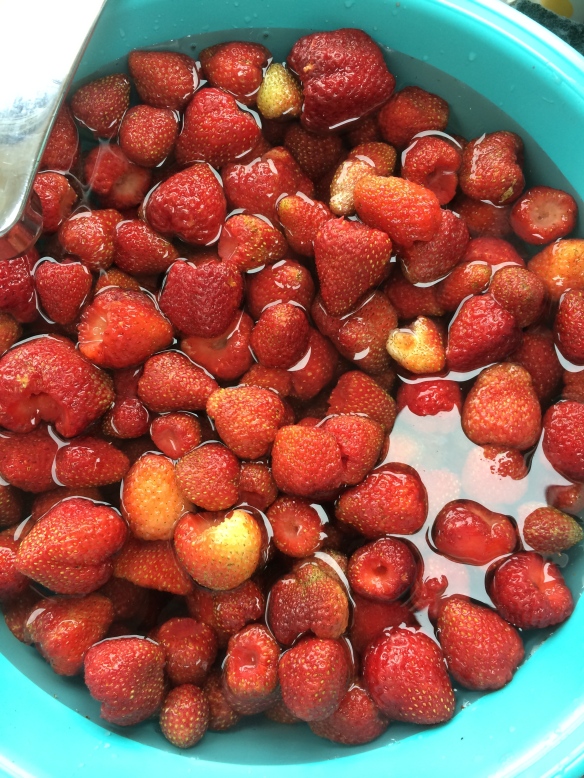

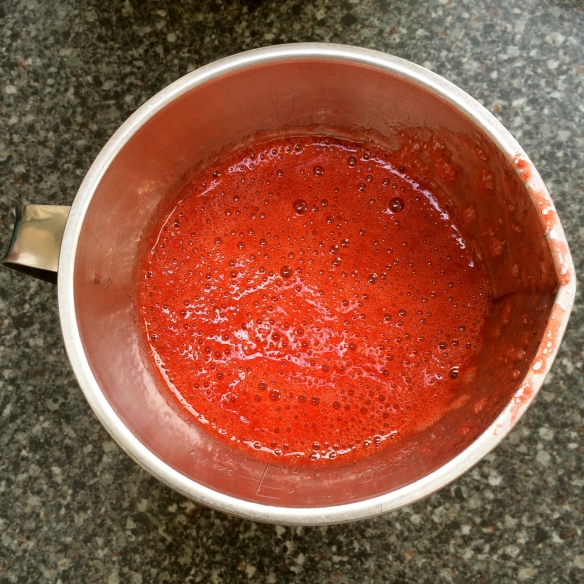

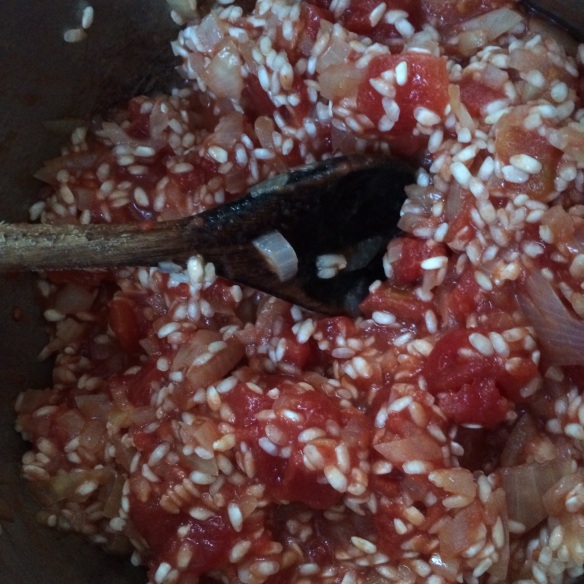














 We then spotted this tunic in Joules and thought we could make something similar.
We then spotted this tunic in Joules and thought we could make something similar.



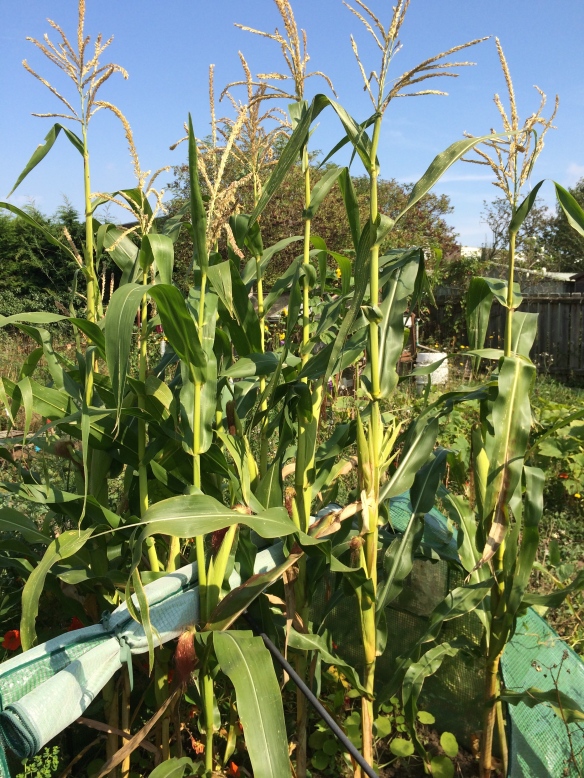







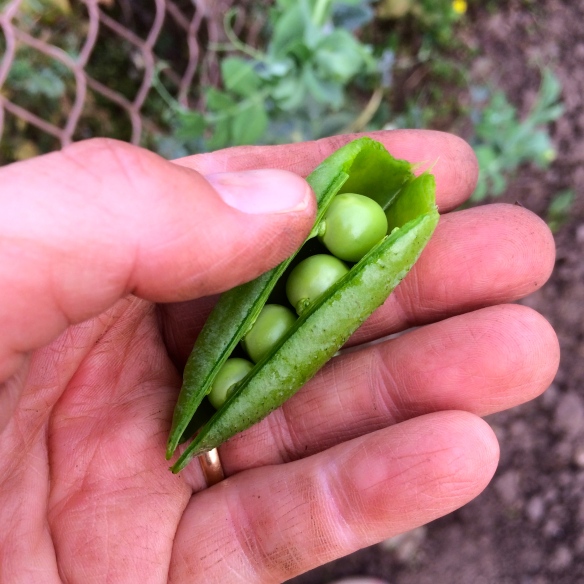











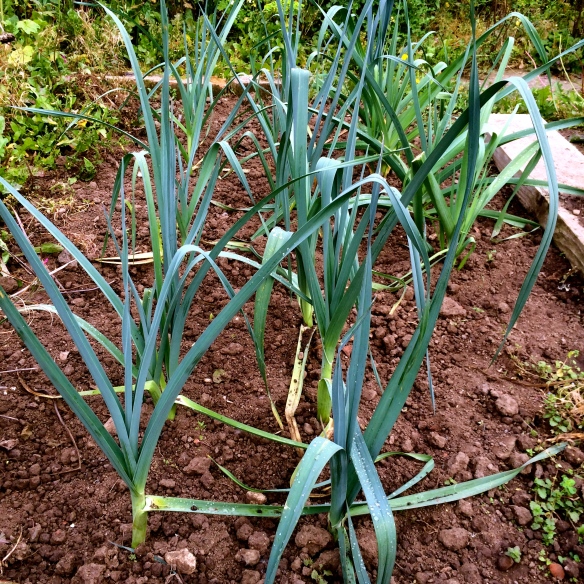 This is the chard patch. Another easy to grow, low maintenance vegetable that I have been adding to curries instead of spinach. I think I am more in love with how it looks than how it tastes, to be honest, but, I just keep thinking about how healthy it must be. It should stand all winter, being resistant to frost. A perfect cut and come again crop.
This is the chard patch. Another easy to grow, low maintenance vegetable that I have been adding to curries instead of spinach. I think I am more in love with how it looks than how it tastes, to be honest, but, I just keep thinking about how healthy it must be. It should stand all winter, being resistant to frost. A perfect cut and come again crop.



 Our sunflowers seem to be reaching their peak now, the tallest one is over 7ft.
Our sunflowers seem to be reaching their peak now, the tallest one is over 7ft.
























